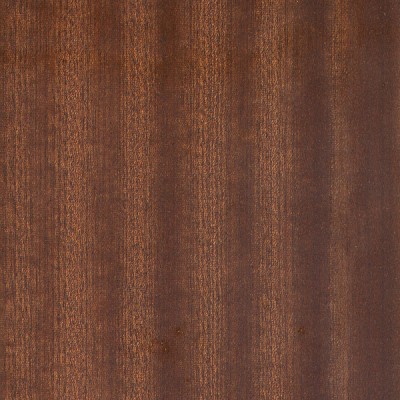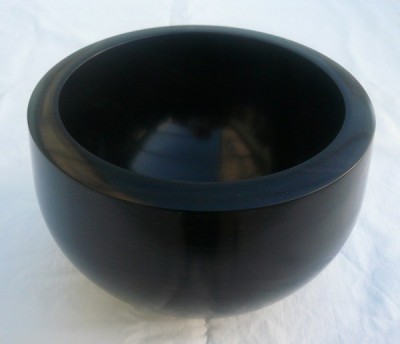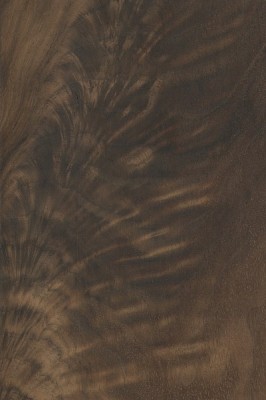In addition to the actual color and appearance of the wood, there are also more subtle and/or tactile properties of the wood.
Grain Direction: A tree species can grow in a number of grain directions. Grain direction usually can’t be detected from endgrain examination; it may have an effect on the workability or appearance of the wood.
- Straight: As the name suggests, this denotes species which grow straight and parallel with the tree’s trunk. Straight-grained woods are generally easiest to work and machine with minimal complications.
- Spiral: Some tree species grow with the grain at a slight incline, with a spiral-like pattern circling the trunk.
- Interlocked: Taking spiral grain a step further, interlocked grain occurs when spiral-grained trees change directions, and spiral back and forth throughout the trunk, alternating between right-hand and left-hand spirals. Depending on the slant of the spiral, and the frequency of the direction changes, woods can be either shallowly or strongly interlocked. This change in grain direction can be seen the clearest on quartersawn surfaces, which creates a ribbon stripe figure. Both spiral and interlocked grain can present challenges when machining, and may result in tearout.

This sample of Narra (Pterocarpus indicus) shows a clear ribbon stripe figure, which is formed by interlocking grain spiraling in different directions throughout the tree’s trunk. - Wavy: Just as the name implies, this grain pattern indicates when the grain of the wood grows in a wavy fashion. This pattern is most clearly seen in flatsawn sections of wood.
- Irregular: This is a more ambiguous catch-all term that describes wood grain that swirls or twists in an abnormal way. Irregular grain can be due to a number of factors, such as knots, burls, large branches separating from the trunk (called “crotch” wood).
This crotch section of Black Walnut (Juglans nigra) has irregular grain, which presents difficulty in terms machining and stability. This particular grain pattern is sometimes called “feather crotch.”
Texture: In the most basic terms, the wood texture describes how a wood feels. Given an equal amount of sanding and smoothing operations, different woods will feel smoother than others. Some will still feel somewhat soft and rough (what is described as coarse texture), while others will feel very smooth and glassy (referred to as a fine texture).
Also related to the texture itself is the uniformity of the texture. Because of the size and distribution of the pores (particularly within the earlywood zone), wood can be very uneven textured. Diffuse porous woods with small pores tend to be the most evenly textured.
If a wood species has very large, open pores, such those found in Red Oak or Wenge, the finished surface will likely be grooved with tiny slits and valleys where the finish settled into the pores, and a pore filler will be needed to get a glassy smooth surface. But if the pores are listed as small or very small, such as the pores of Hard Maple, the wood will likely finished to a smooth and level surface: without the need for pore fillers.
Luster: Sometimes referred to as sheen, a wood’s luster is a measurement of how much light it will reflect. Typically, any wood may appear to have a high sheen if a glossy finishing agent has been be applied overtop the wood; however, some wood species are able to take on a very high polish without any sort of finish applied to them at all. Ebonies (Diospyros genus) and many Rosewoods (Dalbergia genus) are known for their high natural luster.

Get the hard copy






What woods would create the highest natural polish, the smoothest finish, and take the finest detail for extremely intricate tiny carvings? I use mountain mahogany, and boxwood is traditional, what else is as fine?
I’ve heard good things about African blackwood. Olive and black ironwood might also be candidates worth considering.